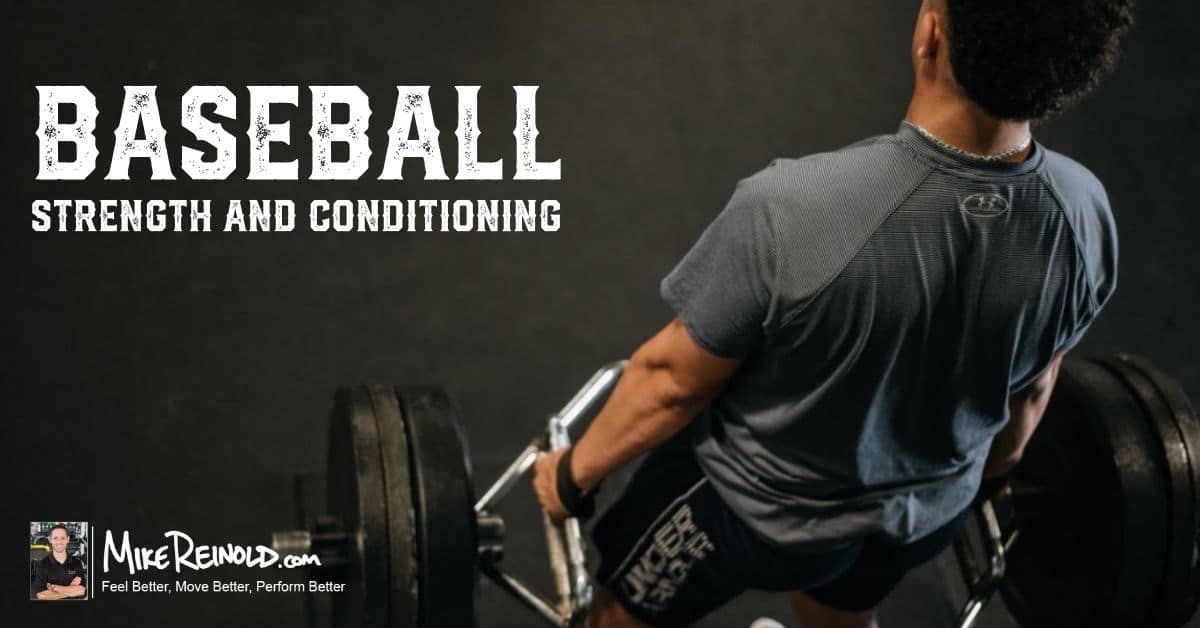Weighted ball training programs have become a very popular tool for baseball players looking to improve their pitching velocity.
Unfortunately, the popularity of weighted baseball training has grown faster than our understanding of the science behind them.
Over the last several years, Lenny Macrina and I at Champion PT and Performance have teamed up with Dr. Glenn Fleisig and Dr. James Andrews at the American Sports Medicine Insitute to try to learn more about the safety and efficacy of weighted baseballs.
Over a series of research projects, we’ve learned a lot over the last few years. But, there are still many questions related to the safety, mechanism, and efficacy of weighted ball usage in baseball.
I am really proud to say, that we are starting to see a shift in the usage of weighted ball programs as coaches learn from our research.
We’ve learned that throwing weighted baseballs changes the stress involved on the arm
Dr. Fleisig examined the biomechanical effect of throwing weighted baseballs in a group of high school and college pitchers.
The authors noted a significant increase in elbow varus torque (stress on the Tommy John ligament) when throwing weighted balls on flat ground with the run-and-gun technique compared to throwing off a mound.
Okoroha showed a similar increase in elbow varus torque in a group of youth baseball pitchers throwing flat ground. They documented a statistically significant increase in stress as the weight of the ball increased.
We’ve learned that injury rates are higher in baseball pitchers that perform a weighted ball program
Our study was the first to examine injury rates during and following a weighted ball throwing program.
While we did show a 3.3% gain in pitching velocity, we also showed a 24% injury rate in high school baseball pitchers who performed a 6-week weighted ball program. There were no injuries in the control group that did not perform weighted ball training and only focused on normal weight training.
And while we did show that velocity increased, it wasn’t in all the pitchers, and 67% of the control group also showed an increase in velocity just by performing basic throwing and weight training.
So, keep that in mind. The increase in velocity is likely overstated with examples from one end of a bell curve becoming popularized on the internet.
It’s important to note that we followed our players for the season after performing an offseason weighted ball program. We see far more injuries in the season after than while actually performing the weighted ball program.
We also think we’ve learned why we see both velocity gains and higher injury rates
More importantly, I really believe that we learned a lot about the mechanism of both the increase in velocity, as well as stress and injury rates, from weighted balls. I’ve tried to summarize this in some articles on the science of weighted baseball training programs.
We were surprised to observe a significant gain in shoulder external rotation range of motion (or layback).
Pitchers in the program showed a significant gain of 4.3 degrees of shoulder external rotation after the 6-week program. The control group did not show this change. And we know from several previous studies that the amount of layback is correlated to both increased stress and velocity in baseball pitchers.
Weighted baseball training programs may be effective at increasing pitching velocity, but they also increase shoulder motion, stress on the elbow, and injury rates
After we found that external rotation of the shoulder increased after performing a 6-week weighted ball program, our first thought was that we needed to study the immediate changes after throwing weighted balls to see if this was something that works right away or needs weeks of training to observe.
This leads us to our latest study.
The Immediate Effects of Weighted Baseballs on Shoulder Range of Motion
In our latest study that was published in Sports Health, we wanted to see what happens to shoulder range of motion immediately after throwing weighted balls.
To study this, we looked at a group of 16 high school baseball pitchers with a mean age of 17 years old. We measured their shoulder range of motion before and after a weighed baseball training session to assess what changes occurred on that one day.
Because there are many different weights of baseballs used in the common training programs, we also wanted to see if there was a difference between the weights of balls used. So we broke the study into 3 different test sessions.
The pitchers came to our facility on 3 separate days to perform the 3 different training sessions:
- Underweight baseballs using 2oz, 4oz, and 5oz balls
- Overweight baseballs using 5oz, 6oz and 9oz balls
- Extreme overweight baseballs using 5oz, 16oz and 32oz balls
Each pitcher threw 3 throws with each ball in 3 different positions:
- Kneeling throws
- Rocker throws
- Run and gun throws

So, in total, each testing session threw 3 throws from 3 positions with 3 different ball weights for a total of 27 throws. That’s not a lot for one session. People often do a lot more than that in reality.
Immediately after each throwing session, we measured their shoulder range of motion again. After just this small amount of time and throws, we didn’t expect to find many differences in the range of motion.
This proved correct when we looked at players after throwing underload balls. There was no change in range of motion. This serves as a good baseline for the rest of the findings, the only variable we changed in the other sessions was the weight of the balls, so any changes we find can be attributed to the weighted balls themselves.
As the weight of the balls started to increase, so did our findings. With the overload balls of 6oz and 9oz, we started to see a change in shoulder external rotation range of motion or layback. As the weight of the balls increased, so did the amount of external rotation gained from throwing. With the overload balls, external rotation increased by over 3 degrees, but with the extreme overload balls of 16oz and 32oz we saw an alarming increase of over 8 degrees:
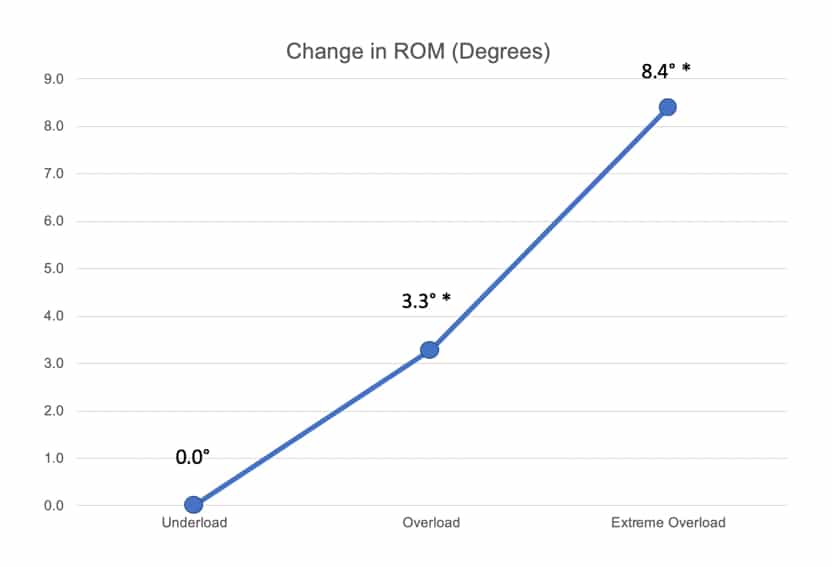
I can’t stress enough how important that finding was in this study. Lenny and I literally looked at each other while we were measuring the range of motion and were shocked.
One thing to keep in mind with any research study is that these values are the averages of the groups. When you break down the numbers per person in the study, the results are even more valuable. Realistically, the level of intensity of the throws may alter the results. If a particular pitcher doesn’t throw with a lot of intensity, it could skew the data. This could happen with people that aren’t used to throwing weighted balls.
For the overload session of 6oz and 9oz balls, you can see that some players’ range of motion didn’t change much, but a trend toward this increase. For those that did increase, there were many that increased more than 5, 10, and even 15 degrees of external rotation, with an average of over 8 degrees:
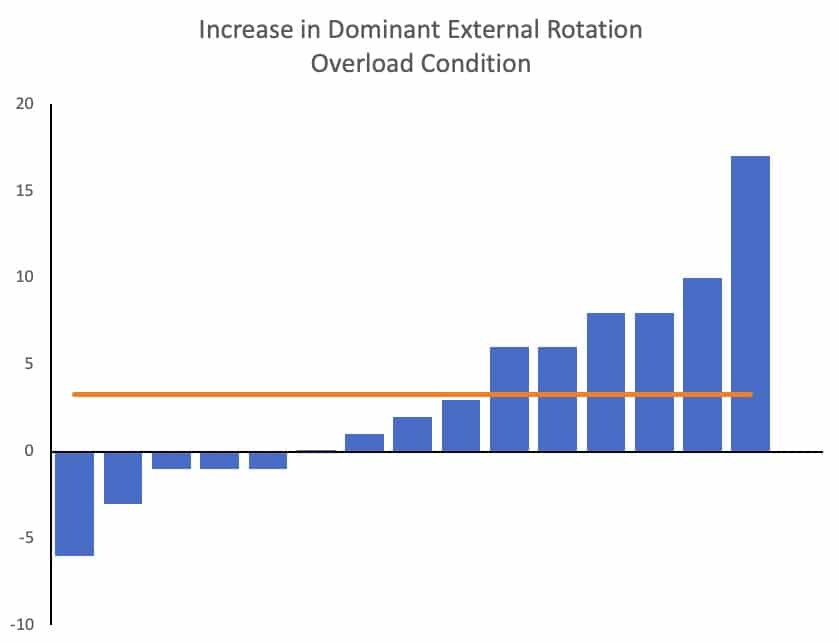
So even though the 3.3 degrees mean change in the external rotation was statistically significant, it could be even more clinically relevant than even this study suggests. I personally consider this 3.3 degree change to be the baseline, with many players increasing more than that.
When you look at the extreme overload session of 16oz and 32oz throws, the results are even more revealing. The large majority of subjects went up, and went up by a lot:
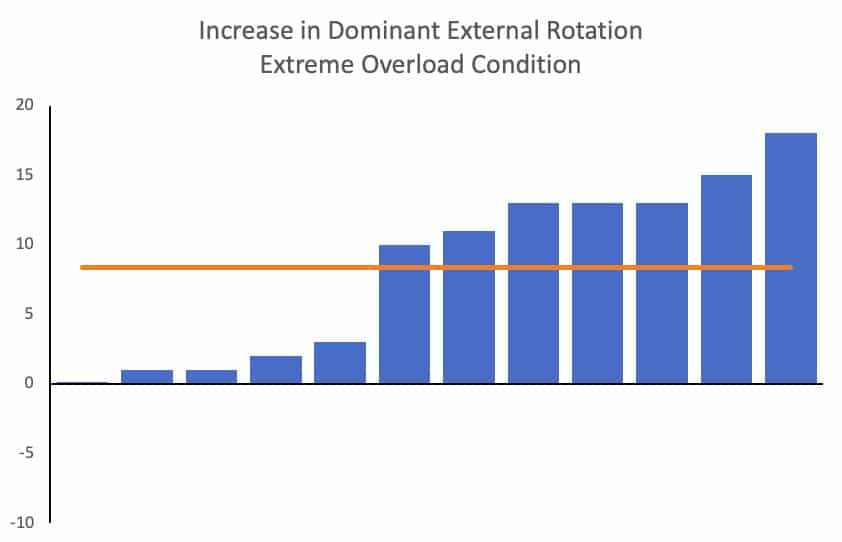
So again, while the mean of 8.8 degrees was statistically significant, the clinical implications are even higher, the majority of players increased external rotation by 10-20 degrees.
This finding is alarming and something that everyone needs to understand if you use or recommend using weighted balls to develop pitching velocity.
Throwing with weighted baseballs increases your external rotation rapidly by a lot. The heavier the ball, the more the range of motion increases.
But… But… But…
As with my past research, many people have read our findings and have not been happy with the results. Perhaps the results challenge their bias and past beliefs? Or maybe they just don’t want to know the science.
So many people have tried to criticize our methods.
Remember, we have no bias. We are the scientific people trying to study these weighted ball programs. We do not profit off them (until you get injured!). We just want to know the science, we really have no preference as to what the data says. I’m as surprised as you are with the results.
I want to address the common things we hear about our studies:
- We included run and guns with a 2lb ball. Unfortunately, this is happening in the real world. Kids are doing this. I’m glad that some people think this is a little crazy, I kinda do too, but the goal of our studies is to assess the spectrum of programs that are out there in the real world. But please keep this in mind… there were only 3 throws with a 2lb run and gun. That’s not a big deal. That’s 3 throws out of 81, or less than 4% of the study. Let’s not throw out the other 96% of the study.
- Players weren’t prepared for a weighted ball program. This isn’t true. All players in our studies had been adequately prepared by performing a baseball-specific training program and a several-week ramp-up throwing program prior to these studies.
- Players weren’t familiar with weighted ball programs. This may be true for some of the subjects, but not all. But again, we wanted to simulate the real world. You have to start training with weighted balls at some point when you first start a program.
I sincerely do not believe any of these factors are very relevant and certainly do not limit the clinical value of our findings.
Why Does External Rotation Increase?
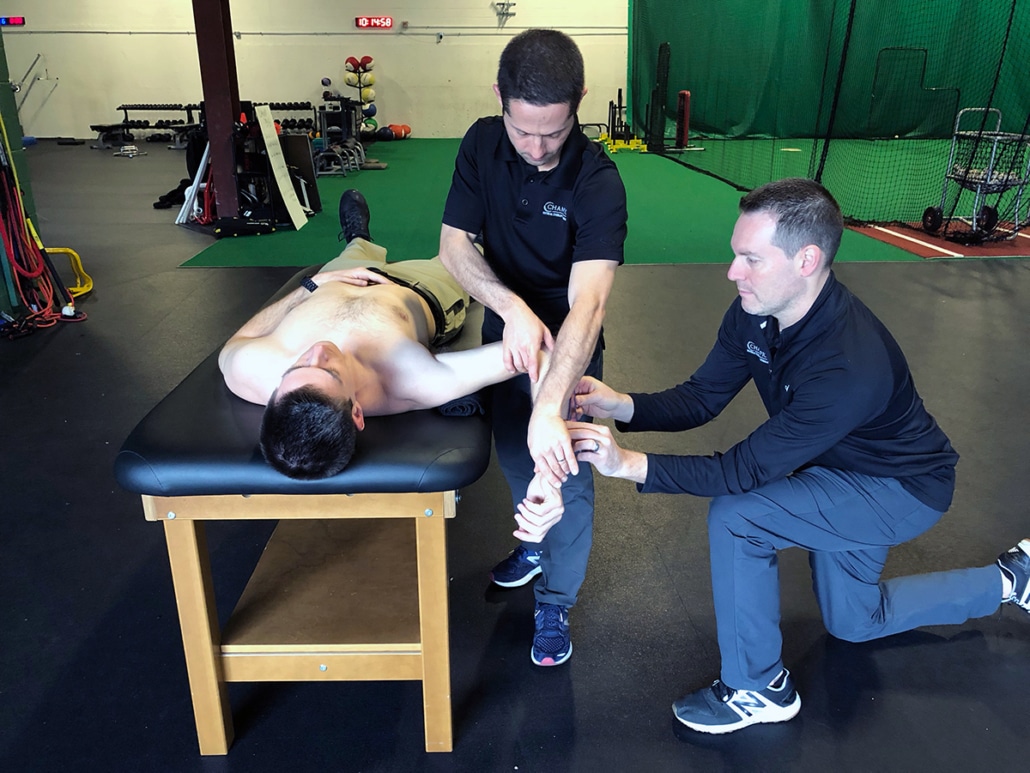
I’ll start this section off pretty clearly: We don’t really know.
But, we have some very plausible educated guesses based on our scientific evidence.
To be honest, I was personally very surprised to see that external rotation increases from weighted balls. But now that we know this, it absolutely makes sense.
But why?
There are likely two reasons why external rotation increases after throwing weighted balls:
- Acute changes to the neuromuscular system
- Chronic cumulative damage to the musculoskeletal system
Weighted Balls Cause Acute Changes to the Neuromuscular System
The rapid gain in external rotation was surprising. I don’t think this typically represents significant trauma to the shoulder, like tearing the capsule or muscles (more on that below…).
What is most likely happening is that we are desensitizing the proprioceptors, the Golgi tendon organs (or GTOs), that are designed to detect stretching and fire our muscles to protect from overstretching.
These GTOs detect when our joints are getting to the end of their range of motion and trigger the opposing muscles to slow down the movement to protect themselves.
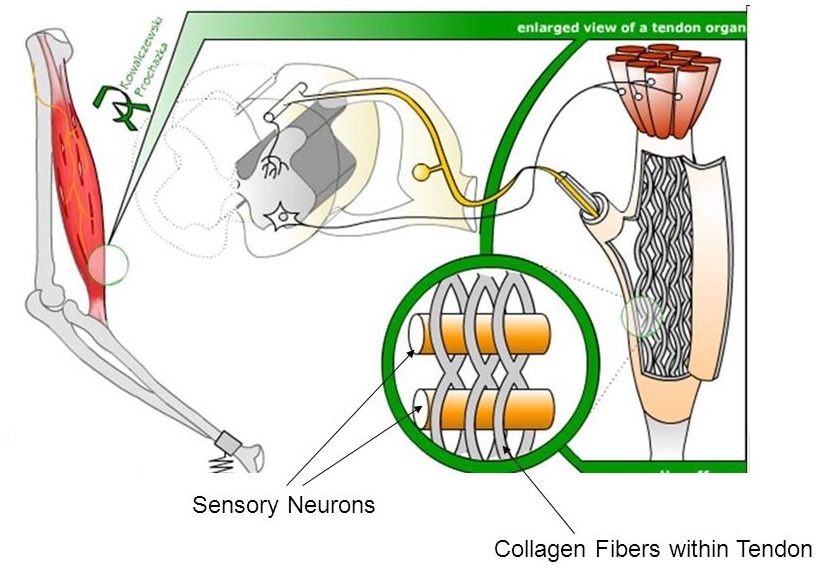
Desensitizing this mechanism can lead to increase mobility, but at what cost?
This is a defense mechanism within our bodies. Without it, our throwing shoulder and elbow are susceptible to more stress.
In the physical therapy and training worlds, we actually use this to our advantage at times. Plyometric exercises, dynamic stretching, and techniques like contract-relax all work on this premise.
When you stretch your hamstrings and feel looser immediately after, it’s not because your hamstrings got longer after a few seconds of stretching. That structurally doesn’t make sense. It’s because you’ve desensitized the stretch reflex of the hamstrings.
This is usually not a big deal, but when you are doing it to push the extremes of your physiology and then pitch on it, it becomes more significant. Pitching already puts a ridiculous amount of stress on your arm.
Weighted Balls Cause Chronic Cumulative Damage to the Musculoskeletal System
Luckily, I think the primary reason why we are seeing the change in external rotation is from the acute desensitization of the proprioceptors we just discussed.
However, it would be short-sighted to also not consider some chronic damage, especially if pitching with this increased external rotation.
During the pitch, the arm rapidly transitions from external rotation to internal rotation to start accelerating the ball. This places tremendous stress on the static and dynamic stabilizers of the shoulder.
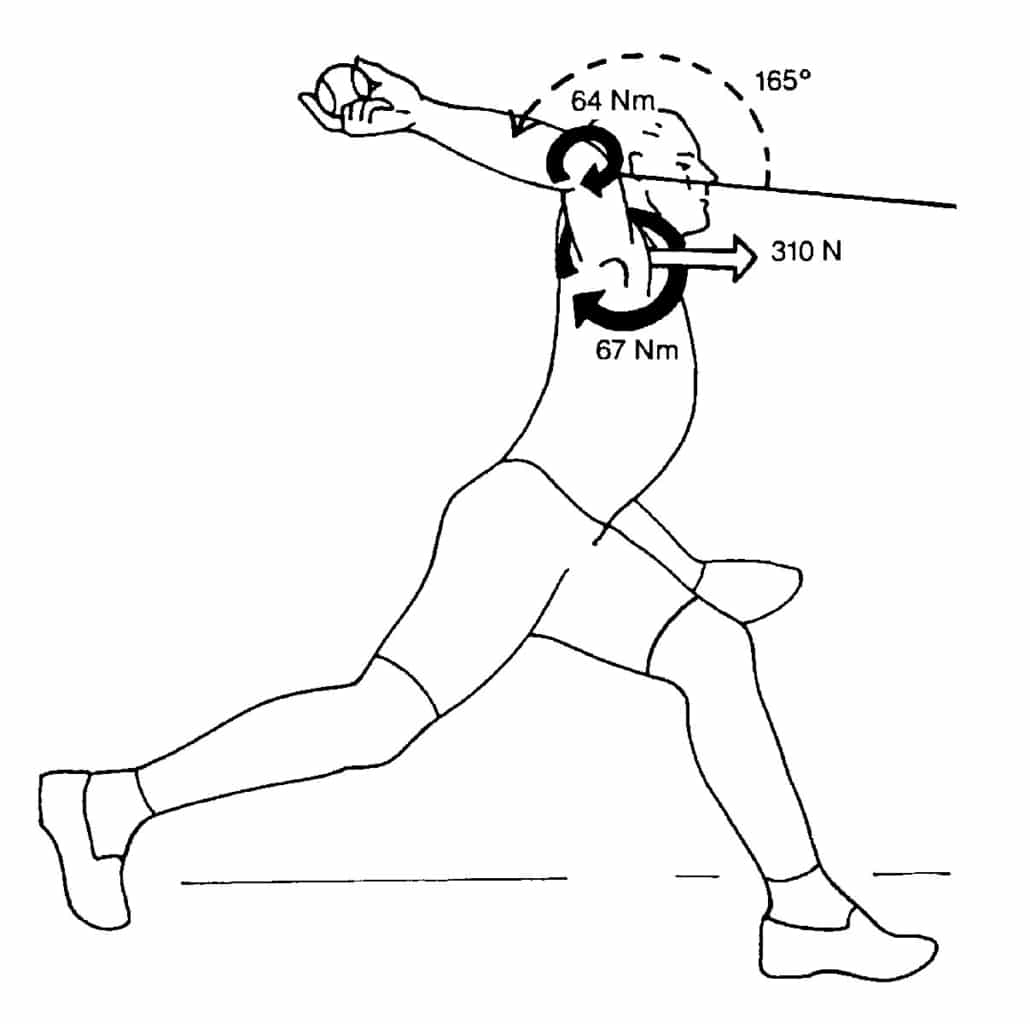
Statically, this can damage the anterior capsule of the shoulder. You don’t want this.
Dynamically, we are seeing damage to the muscles that need to eccentrically slow down the layback and transition to arm acceleration. These muscles include the latissiumus dorsi, teres major, pectoralis, and subscapularis muscles.
Have you noticed how common lat strains are in baseball now? We rarely saw this 10-20 years ago.
The acute changes are likely also leading to chronic cumulative changes.
So What Does All This Mean?
So now that you know way more than you probably ever wanted to know about shoulder external rotation, let me explain why this matters.
Quite simply, we know that the more external rotation you have the more velocity you have. We also know this increases the stress on your shoulder and elbow.
This is the part that sounds like rocket science but is actually common sense. It’s physics. More layback allows the arm to throw harder, which puts more stress on the arm.

Duh, right? Makes sense now, right?
Most of the proposed theories on why weighted balls helped increase pitching velocity are likely not true. The gain in layback is the primary reason, no doubt in my mind.
Weight ball programs do not increase arm speed, do not increase arm strength (in fact we showed they inhibit strength development), and do not do any of the other things that have been proposed. We have now officially studied this all and concluded this with our research.
Weighted balls increase layback, which increases velocity, which both increase stress, which all increase injury rates.
Again, makes perfect sense now, right?
Do We Even Need Weighted Ball Training Programs?

OK, I get it, you still want to use weighted balls. They seem magical on the internet.
I’m completely fine with that. I use them myself with many of the players we work with, but not all of them.
As we continue to learn more, I think we realize that weighted balls have a very small place in our velocity development programs for the right person at the right time.
They should not be performed blindly on a big group of people like we are seeing being implemented for youth, high school, and college teams across the country.
This is silly.
As with everything else in life, it’s all about the dosage. Ever hear the phrase “there’s too much of a good thing?”
We are really overdosing on weighted balls.
But I’m going to end this article with a question… do we even need weighted ball training programs?
I’m not talking about substituting weighted ball training with many of the things that have been proven to enhance velocity without causing injuries, like strength training, power development, arm care, and proper biomechanics. I’m talking about do we need to be doing these elaborate weighted ball training programs all offseason.
Based on this current study, if layback range of motion increases so much so quickly, and more layback means more velocity then maybe all we need is a quick and simple warm-up with a weighted ball.
This could give a small stimulus to desensitize your proprioceptors enough to allow a little more layback and a little more velocity, without having the put the body through weeks of a weighted ball training program.
This sounds a lot safer on the body to me.
This also sounds like a potential next study for someone to perform…




